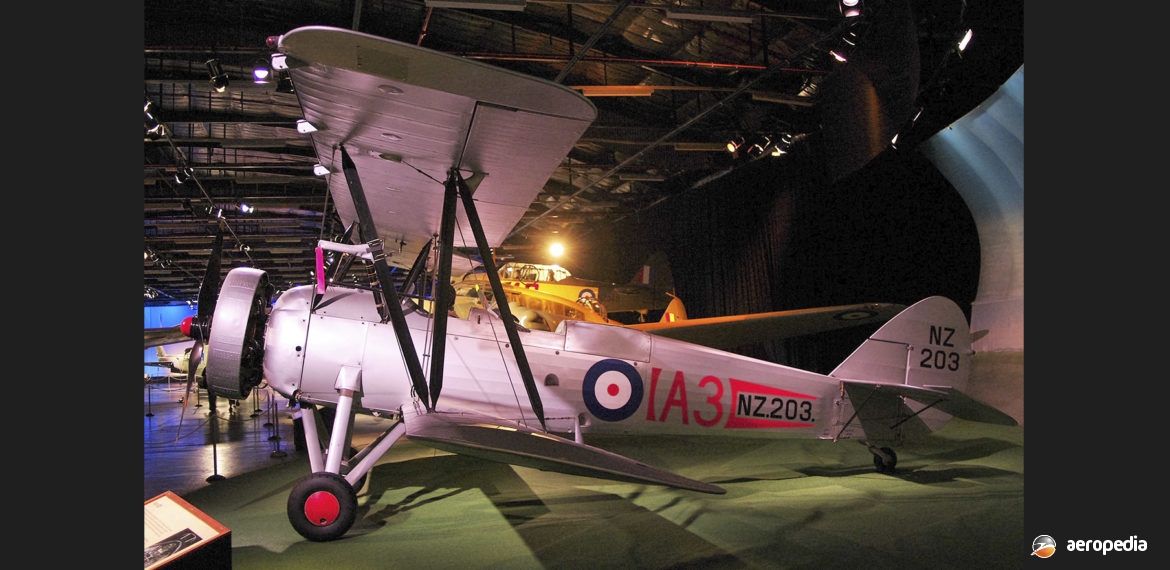Photograph:
Avro 626 NZ203 at the RNZAF Museum at Wigram, NZ (David C Eyre)
Country of origin:
United Kingdom
Description:
Two-seat military trainer
Power Plant:
One 207 kw (277 hp) Armstrong Siddeley Cheetah V seven-cylinder supercharged air-cooled radial engine
Specifications:
- Wingspan: 10.4 m (34 ft)
- Length: 8.07 m (26 ft 6 in)
- Height: 3 m (9 ft 9 in)
- Wing area: 27.87 m² (300 sq ft)
- Max speed: 209 km/h (130 mph)
- Cruising speed: 174 km/h (108 mph)
- Initial rate of climb: 305 m/min (1,000 ft/min)
- Ceiling: 5,121 m (16,800 ft)
- Range: 322 km (200 miles)
- Empty weight: 912 kg (2,010 lb)
- Loaded weight: 1,210 kg (2,667 lb)
History:
The Avro 621 Tutor, of fabric-covered metal construction, was designed as a basic trainer to replace the Avro 504 in service with the Royal Air Force. The prototype G-AAKT, powered by a 116 kw (155 hp) Armstrong Siddeley Mongoose IIIA radial engine, flew in 1930, but the second prototype and production aircraft were powered by the 179 kw (240 hp) Armstrong Siddeley Lynx radial engine.
Main production of this model was for the RAF and a few foreign air forces. A few appeared in civil service, including VH-UOL (c/n 413), which was delivered to Australian National Airways Ltd in Sydney, NSW. However, it was only registered from 30 July 1930 to 29 July 1931 when the registration lapsed and its fate is not known.
Subsequently the Avro 626 advanced trainer version appeared. Similar to the 621, it was fitted with a third cockpit and provision for a gun ring. A number of this model entered civil service throughout the world, and others were sold to air forces as trainers. Four were obtained for the RNZAF (serials NZ201 to NZ204 – c/ns 809 to 812) and were operated in the advanced training, gunnery, wireless transmission and air-observer training roles during the years 1935 to 1941. Subsequently two became instructional airframes and two were scrapped.
Another variant was known as the Avro Prefect in the United Kingdom. Fitted with the 194 kw (260 hp) Armstrong Siddeley Cheetah engine, some 626 examples were produced.
As far as is known, only one Avro 626 has survived. This aircraft (ex-NZ203) was flown in New Zealand as ZK-APC after World War II. In 1985-1986 it was restored to airworthy condition and flown at a number of air displays. However, it suffered some damage in an accident and, after being repaired, the question was raised as to whether the last aircraft of its type in the world should be flown. The decision was taken to ground the 626 and it has since been on display at the RNZAF Museum at Wigram near Christchurch.

